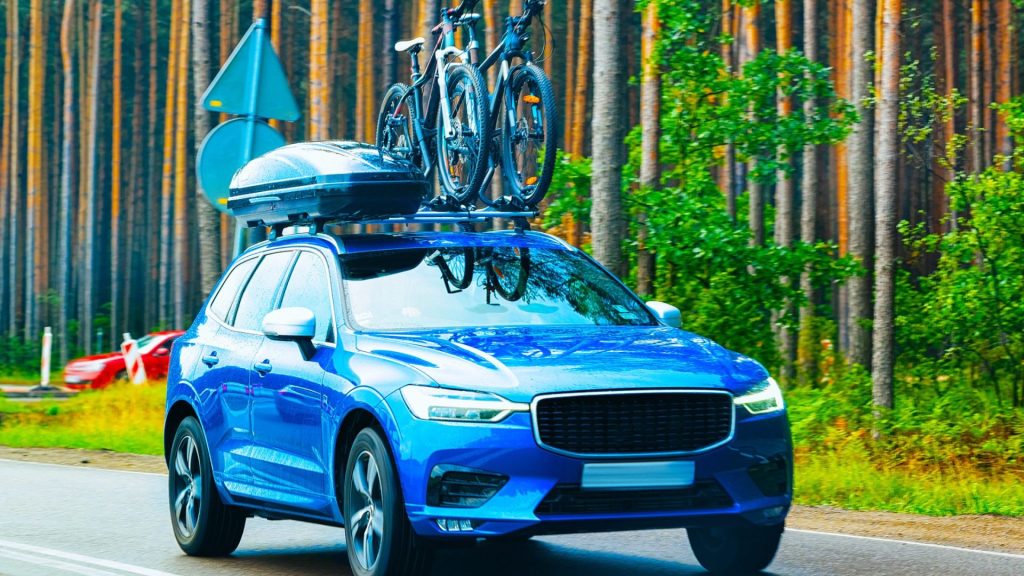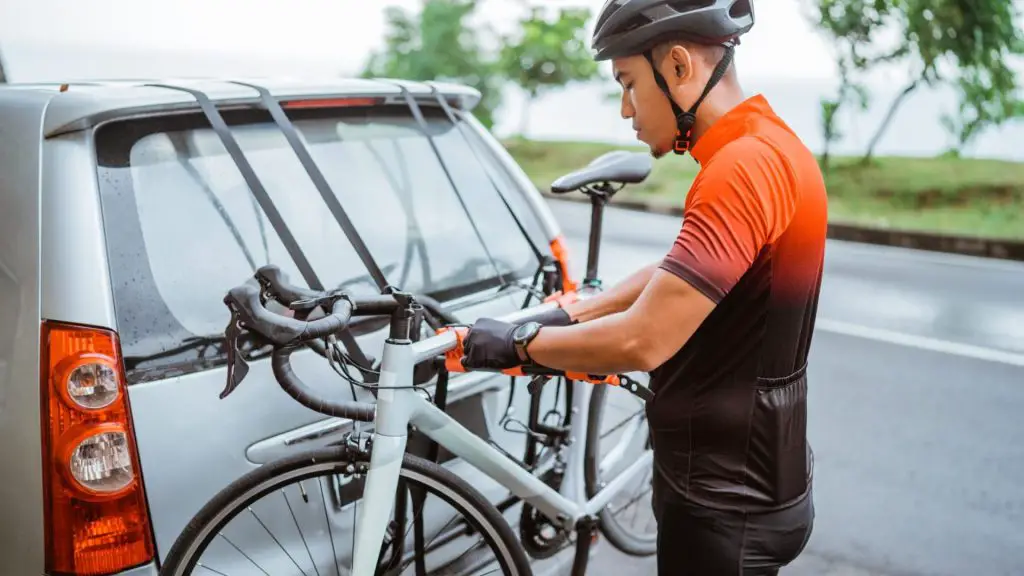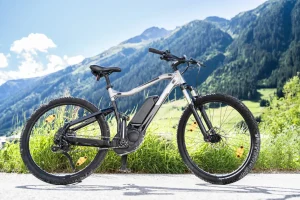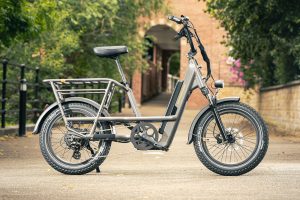Are you an avid cyclist looking to explore new biking trails with your trusty bicycle? One of the most convenient ways to transport your bike is by using a bike rack for your car. Bike racks are designed to securely hold your bike while you travel, allowing you to bring your bike along wherever you go. However, properly loading a bike rack for a car requires some knowledge and technique to ensure the safety of your bike and other road users. In this comprehensive guide, we will take you through the process of loading a bike rack step by step, covering various types of bike racks, installation, loading techniques, safety tips, and more.
Introduction: Why You Need a Bike Rack for Your Car
If you’re passionate about cycling and want to explore different biking destinations, having a bike rack for your car is a game-changer. It provides a convenient way to transport your bike without disassembling it or compromising space inside your vehicle. Whether you’re planning a road trip or heading to your favorite local trail, a bike rack ensures you can bring your bike along and enjoy the ride wherever you go.

Types of Bike Racks for Cars
There are three main types of bike racks for cars: hitch-mounted, roof-mounted, and trunk-mounted. Each type has its advantages and considerations, depending on your needs and vehicle specifications.
Hitch-Mounted Bike Rack
Hitch-mounted bike racks are attached to the hitch receiver at the rear of your vehicle. They are known for their stability and ease of use. These racks can accommodate multiple bikes and offer easy access to the rear of your vehicle. However, they require a compatible hitch receiver for installation.
.jpg)
Roof-Mounted Bike Rack
Roof-mounted bike racks are installed on the roof of your car, utilizing crossbars or a roof rack system. They are ideal for vehicles with limited hitch options or for those who want to carry other gear, such as kayaks or cargo boxes, alongside their bikes. Roof-mounted racks provide a secure and versatile option but may require lifting the bike higher for loading and unloading.

Trunk-Mounted Bike Rack
Trunk-mounted bike racks are the most affordable and easily accessible option. They attach to the trunk or hatchback of your car using straps and hooks. Trunk-mounted racks are lightweight and portable, making them suitable for occasional use or smaller vehicles. However, they have lower weight capacities compared to hitch or roof racks and may obstruct rear visibility.

Bike Rack Installation
Before you load your bike onto a car rack, it’s crucial to install the rack properly. The installation process may vary depending on the type of rack you have. Refer to the manufacturer’s instructions for detailed guidance on how to install your specific rack model. Here are some general steps to follow:
- Identify the appropriate mounting points or hitch receiver on your vehicle.
- Attach the bike rack securely to the mounting points or hitch receiver, following the instructions provided.
- Double-check the stability and tightness of all connections.
- Ensure that the rack is level and doesn’t obstruct any lights, license plates, or rearview mirrors.
- Test the rack’s stability by gently shaking it to make sure it’s firmly attached.
Choosing the Right Bike Rack for Your Car
When selecting a bike rack for your car, there are several factors to consider:
- Type of rack: Choose a rack that suits your vehicle and biking needs (hitch-mounted, roof-mounted, or trunk-mounted).
- Bike capacity: Determine how many bikes you need to transport.
- Vehicle compatibility: Ensure the rack is compatible with your vehicle’s make, model, and year.
- Ease of installation: Consider how easy it is to install and remove the rack.
- Security features: Look for racks with locking mechanisms to prevent theft.
- Budget: Set a budget that aligns with your requirements and quality expectations.
Take your time to research and compare different bike rack options before making a purchase. Reading customer reviews and seeking expert advice can also help you make an informed decision.
Bike Rack Capacity and Weight Limits
Each bike rack has a specific weight capacity and is designed to carry a certain number of bikes. It’s essential to understand these limits and ensure that you don’t exceed them. Overloading the rack can lead to instability, potential damage to your vehicle or bikes, and a safety hazard on the road. Refer to the manufacturer’s guidelines to determine the maximum weight capacity and the recommended number of bikes for your specific rack.
Bike Rack Compatibility with Your Car
Before purchasing a bike rack, check its compatibility with your car. Factors to consider include the type of vehicle (sedan, SUV, hatchback, etc.), the presence of a hitch receiver or roof rack system, and the specific requirements mentioned by the manufacturer. Some racks may require additional accessories or modifications to fit certain vehicle models. Ensuring compatibility is crucial for a secure and hassle-free transportation experience.
Positioning the Bike Rack on Your Car
The placement of the bike rack on your car is important for stability, safety, and aerodynamics. Follow these guidelines for proper positioning:
- Hitch-mounted: Align the rack parallel to the ground and make sure it doesn’t interfere with the vehicle’s exhaust or rear lights.
- Roof-mounted: Position the rack centered and evenly spaced on the crossbars, avoiding any contact with the roof itself.
- Trunk-mounted: Place the rack securely on the trunk or hatchback, ensuring it doesn’t obstruct the rearview mirror or license plate.
Double-check the rack’s positioning before loading your bikes to ensure a secure fit and unobstructed visibility.
Loading Bikes onto a Car Rack
Loading your bikes onto the car rack requires care and attention to prevent any damage during transportation. Follow these steps:

- Prepare your bikes by removing any loose or detachable accessories, such as water bottle cages or saddlebags.
- Position the bike rack in a way that allows easy access to load the bikes.
- Lift the bike and carefully place it on the designated rack cradles or arms.
- Align the bike’s frame with the designated areas on the rack, ensuring a secure fit.
- For multiple bikes, leave enough space between them to avoid any contact or rubbing during transit.
Securing Bikes on a Car Rack
Once the bikes are loaded, securing them properly is crucial to prevent any movement or dislodgment during travel. Follow these steps to secure your bikes:
- Use adjustable straps, bungee cords, or rubberized tie-downs provided by the rack manufacturer.
- Attach the straps or tie-downs to the designated points on the rack, securing each bike individually.
- Pull the straps or tie-downs tight, but be cautious not to overtighten and damage the bike frame.
- Test the stability of each bike by giving them a gentle shake and ensuring they don’t move or wobble excessively.
Bike Rack Tie-Down Straps
Most bike racks come with built-in tie-down straps or additional straps that can be purchased separately. These straps are used to secure the bikes tightly to the rack, preventing them from shifting or falling off. When using tie-down straps, follow these guidelines:
- Position the straps over the bike frame, avoiding contact with delicate components like cables or brake levers.
- Thread the straps through the designated loops or hooks on the rack and tighten them securely.
- Double-check the tightness of the straps and ensure there is no slack or movement.
Bike Rack Locking Mechanisms
To enhance the security of your bikes, some racks come with built-in locking mechanisms or offer compatible lock accessories. These locks help prevent theft by securing your bikes to the rack or the rack to your vehicle. Consider investing in a lock if you often leave your bikes unattended or plan to make stops during your journey. Follow the manufacturer’s instructions for using the locking mechanisms effectively and ensure that the lock is sturdy and tamper-resistant.
Bike Rack Safety Tips
Loading a bike rack for a car requires attention to safety to ensure a smooth and secure journey. Keep these safety tips in mind:
- Regularly inspect your bike rack for any signs of wear or damage.
- Ensure your bikes are securely fastened and won’t come loose during transit.
- Check the bike rack and bikes at each rest stop to ensure they remain secure.
- Avoid exceeding the recommended weight capacity or loading more bikes than the rack can handle.
- Drive cautiously and avoid sudden maneuvers or excessive speeds to prevent unnecessary stress on the rack and bikes.
Car Rack Maintenance
Maintaining your bike rack is essential for its longevity and optimal performance. Follow these maintenance tips:
- Clean the rack regularly, removing dirt, debris, and any corrosive substances.
- Lubricate moving parts, such as hinges and folding mechanisms, with appropriate lubricants.
- Check and tighten all bolts, nuts, and screws to ensure they are secure.
- Store the rack in a dry place when not in use to prevent rust or damage.
Bike Rack Removal from the Car
When you no longer need the bike rack or want to access your vehicle without it, follow these steps for safe removal:

- Start by unfastening all straps, tie-downs, or locking mechanisms securing the bikes to the rack.
- Carefully lift the bikes off the rack and set them aside in a safe location.
- Remove any additional accessories or attachments from the rack, such as baskets or bike trays.
- Follow the manufacturer’s instructions to uninstall the rack from your vehicle, whether it’s a hitch-mounted, roof-mounted, or trunk-mounted rack.
- Store the rack properly to avoid damage and ensure it’s ready for future use.
Bike Rack Accessories
Enhance the functionality and convenience of your bike rack by considering these optional accessories:
- Cable locks: Provide additional security for your bikes by looping a cable lock through the frames and attaching it to the rack.
- Adapters: If your bike has a non-standard frame, consider using adapters to ensure a secure fit on the rack.
- Wheel mounts: Wheel mounts can be added to roof-mounted racks to securely hold the front wheel in place, preventing it from spinning during transit.
- Lighting accessories: Install rear-mounted lights or reflectors to improve visibility and safety while transporting your bikes.
Conclusion
Loading a bike rack for a car is a skill worth mastering for any cycling enthusiast. By following the steps and tips outlined in this guide, you can ensure the safe and secure transportation of your bikes to your desired biking destinations. Remember to choose the right rack, install it correctly, load and secure your bikes properly, and prioritize safety throughout your journey. Happy cycling!
Related topics:
- How To Avoid Cycling Lower Back Pain?
- What Muscles Involved in Bicycle Riding? A Comprehensive Guide
- How To Pay Attention To Riding Sun Protection: A Comprehensive Guide
FAQs
Can I install a bike rack on any type of car?
Yes, there are bike rack options available for various types of cars, including sedans, SUVs, hatchbacks, and more. However, it’s important to check the compatibility of the bike rack with your specific vehicle model before making a purchase.
How many bikes can I transport on a bike rack?
The number of bikes you can transport depends on the capacity of the bike rack. Different racks have different weight limits and can accommodate varying numbers of bikes. Refer to the manufacturer’s guidelines for the recommended capacity of your chosen rack.
Are bike racks difficult to install?
The level of difficulty for installing a bike rack can vary depending on the type of rack and your vehicle’s specifications. Some racks require minimal assembly and can be easily installed, while others may require additional tools or professional assistance. Carefully read the installation instructions provided by the manufacturer for your specific rack model.
Are there any safety precautions I should take when loading bikes onto a car rack?
Yes, safety is crucial when loading bikes onto a car rack. Ensure that the rack is securely installed and the bikes are tightly fastened to prevent any movement or dislodgment during transit. Double-check the tightness of straps or tie-downs and periodically inspect the rack and bikes during your journey to ensure their security.
Can I leave my bike rack on the car when not in use?
It is generally recommended to remove the bike rack from your car when not in use. This helps prevent potential damage to the rack and reduces wind resistance, which can improve fuel efficiency. However, if you regularly use your bike rack, you can leave it on as long as it doesn’t obstruct your visibility or interfere with everyday use of the vehicle.













